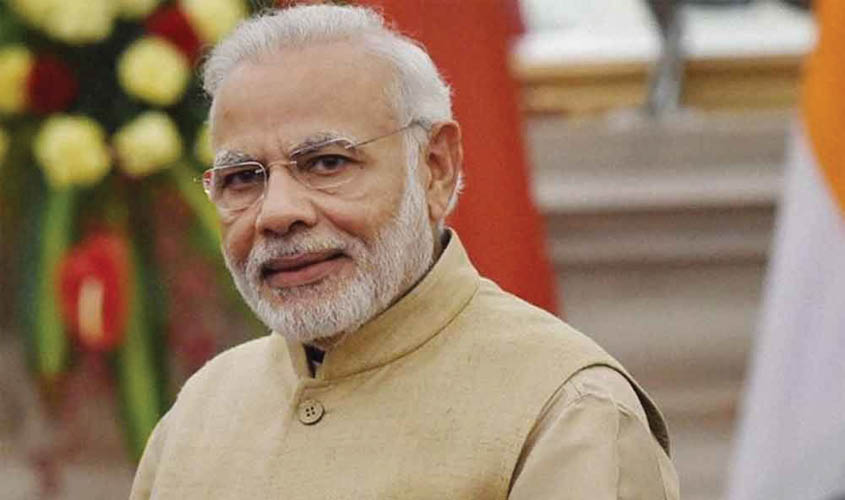The Centre’s decision to change the basic structure of Jammu and Kashmir, following the abrogation of the controversial Article 370, and some of its related provisions, has received widespread support both nationally and internationally. Pakistan, which has been sponsoring terrorism in the strife-ridden border state, is visibly shell-shocked and is at its wit’s end to figure out how New Delhi has altered the character of the region after due consultations with experts and legal luminaries well-conversant with the Constitution.
In fact, even the staunchest critics of Prime Minister Narendra Modi reluctantly concede that the initiative could prove to be a game changer, thus rectifying many of the colossal mistakes made by previous regimes. It was always a matter of immense concern for the rest of the country, that how certain select families, under the garb of Article 370, had amassed huge wealth, which was originally meant for the welfare of the common people. Instead of the money being utilised on them, it was pocketed by corrupt politicians, bureaucrats and others. Therefore, to begin with, this momentous step would end the festival of unending loot that was taking place in the valley while cutting a lot of people to size.
Revocation of Article 370 has always been on the manifesto of the BJP since the Jana Sangh days, and in that sense, the Modi government has fulfilled a long standing promise. However, what is surprising: why the ruling party politicians are disinclined in giving credit to the late Balraj Madhok for first taking up the matter with Sardar Patel and Pandit Nehru as early as March 1948. This was before he co-founded the Jana Sangh with Dr Shyama Prasad Mukherjee, a doyen in his own right. The objections to the concessions extended to Jammu and Kashmir pertained to the existence of two Constitutions, two Flags and two Heads of Governments. Although Patel told Madhok that he agreed with his observations, it was Nehru, who apparently continued to remain adamant.
Although I am neither a Kashmiri nor a resident of the state, I do share a deep connection with the region, and therefore my anxiety at what has been happening in that belt goes back a long way. My maternal grandfather enjoyed a very close relationship with Maharaja Hari Singh and served for a long period in both Gilgit and Gurez. My father hailed from the Jhelum district (now in Pakistan) and my sisters were born in Jammu. Renèe, my wife, and her paternal family originally belonged to the state. In fact, I have always marvelled how Kashmiris were amongst the only North Indians who took great pride in their heritage and culture and in the process tried to maintain a distinct and unique identity. This spirit suffered a large setback when the Kashmiri Pandits were driven out of the state despite the fact that both Muslims and Hindus had harmoniously co-existed there for centuries. There clearly was a Pakistan inspired design to consolidate its footprint in the mountains.
Modi and Shah have defended their initiative most passionately, but in doing so have not once referred to the Kashmiri Pandits. This group of Indians have become nomads in their own country and it is unlikely that they would return to the valley unless there is an absolute guarantee of their safety. This may take years, and the settlements identified on the other side of Jhelum would not suffice. Politicians in the valley made it a point to talk about Insaaniyat, Kashmiriyat and Jamuhooriyat without themselves believing in these principles. They spoke about the hurt of the Kashmiris and when Modi has sought to provide a healing touch, they are describing the measures as dictatorial.
The Congress is performing another political hara-kiri by opposing the measures without bothering about the ramifications. Many party leaders have already extended support to the government on the issue, and Dr Karan Singh, the erstwhile Maharaja of the state, has in a carefully worded statement, also backed the decision while demanding the restoration of statehood.
In fact, if one reads between the lines of what Modi stated a few days ago, the government has a well thought through blueprint of what is intended. It appears that the government will first go through the motions with the Union Territory status and after a lapse of time may constitute a Delimitation Commission, which would undertake the task of redefining Assembly constituencies. In the long run, statehood may be revived, but this time, contrary to the arrangement that existed earlier, the number of seats in the Jammu region may outstrip those in the valley. In addition, certain seats which have a sizable Gujjar and Bakrawal population could be reserved, thus ending Kashmir’s hegemony over others. Ladakh, of course, stands liberated as a Union Territory and, therefore, could witness rapid development so far denied to it.
The Centre’s rule, with the police and state administration now under its direct command, could help in bringing some semblance of peace. Till now, even during the Governor’s Rule, full cooperation was never extended to New Delhi, with vested interests calling the shots.
US President Donald Trump had recently offered to mediate to settle the contentious Kashmir problem, claiming that he had been requested by Prime Minister Modi to do so. India has sorted out its own house, and thus the US President should use his good offices for ending the illegal annexed action that occurred many decades ago in what today is Pakistan Occupied Kashmir. Between Us.

